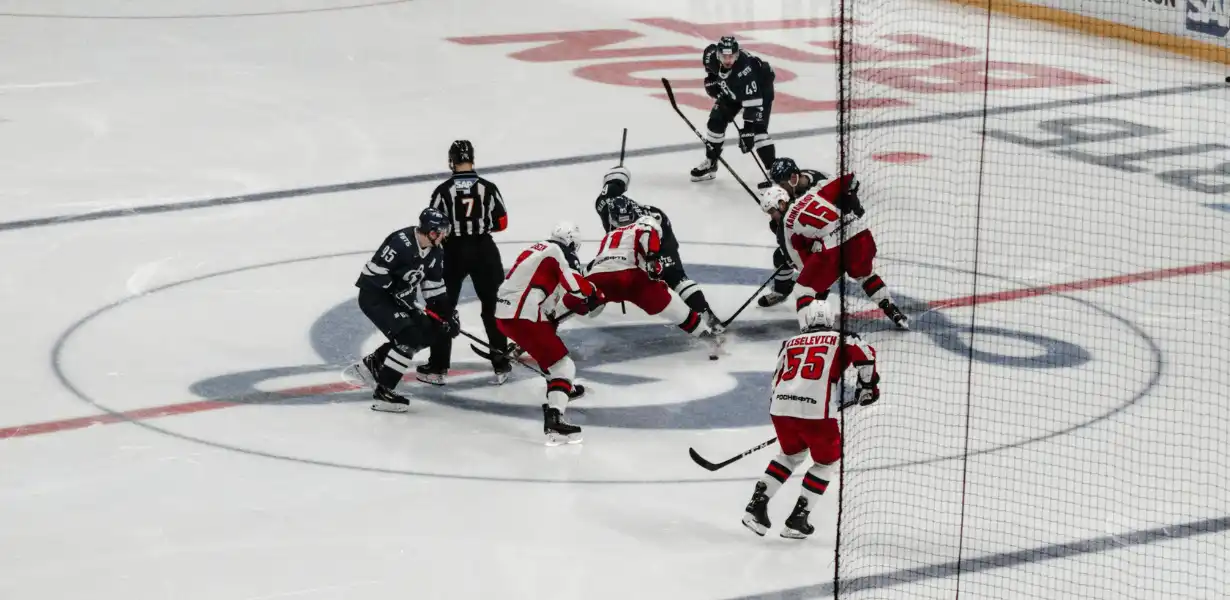Let’s talk about one of the quirkiest rules on the ice: kicking the puck. You’ve seen it before—scramble in front of the crease, puck bouncing around, and then it takes a wild ride off a skate blade and into the net. The crowd roars, but then the referees skate over and point to the replay booth. Why? Because the rules about using your feet in hockey are some of the trickiest in the book.
Tonight, we’re breaking it all down: when you can use your skates, when it costs you a goal, and why this rule has produced some of the sport’s most unforgettable controversies.
Skates in Play: More Than Just for Speed
Here’s the first big call—yes, you can kick the puck. In fact, players do it all the time. Along the boards, in the corners, or when their stick is tied up, you’ll see guys using their skates to push, redirect, or chip the puck to a teammate. It’s perfectly legal.
Why? Because hockey is chaotic. Sometimes the quickest play isn’t with the blade of your stick but with the blade on your foot. The rulebook gives players the green light to kick the puck around the ice, in any direction, as long as there’s no direct attempt to score.
The Red Line in the Sand: Scoring with a Kick
Here’s where things heat up. A goal cannot be scored by a distinct kicking motion. That’s the referee’s watchword: “distinct.” If a player winds up and boots the puck toward the net, it’s coming back—no goal.
But if that same puck simply deflects off a skate and across the goal line, that’s another story. Suddenly, we’re in gray-area territory. Was it redirected, or was it kicked? That’s when officials head to the video booth and fans hold their breath.
Deflections vs. Kicks: The Million-Dollar Question
So what separates a highlight-reel deflection from a disallowed boot? Intent. Here’s the play-by-play:
• Legal Goal: The puck ricochets off a skate while a player is pivoting or battling in front. No kick, just good positioning.
• No Goal: A clear swing of the leg, like taking a shot in soccer. That’s a distinct kicking motion, and it doesn’t count.
The referees don’t just look at the puck—they’re analyzing the movement of the skate. And fans know how tight these calls can be.
Why the Rule Exists
The NHL didn’t write this rule just to annoy fans. There are two big reasons behind it:
1. Safety First: Imagine a crowded crease and players swinging their legs like strikers on a soccer pitch. Sharp steel blades flying around goaltenders? Not happening.
2. Protecting the Game’s Identity: Hockey is about stickhandling, passing, and shooting. Allowing kicked goals would shift the balance and turn net-front scrambles into soccer scrums.
So, while a little redirection is fine, full-on kicking for goals is out.
Other Times Skates Come into Play
Kicking doesn’t just show up during scoring chances. Here are a few other spots where the skates factor in:
• Faceoffs: You can’t just boot the puck off the draw. Sticks have to play it first.
• Passing with Skates: Unlike hand passes, which are restricted, you can kick the puck to a teammate anywhere on the ice.
• Goaltender Moves: Goalies use their skates constantly—cutting off angles, steering rebounds, and banking pucks to teammates.
It’s all part of the chess match happening at ice level.
Legendary Controversies
Now, folks, let’s rewind the tape to some of the most talked-about moments in hockey history. Kick-related goals have swung momentum, decided playoff series, and sparked endless debates on sports talk radio.
Perhaps the most famous? The 1999 Stanley Cup Final. Brett Hull scored in triple overtime to give the Dallas Stars the championship, but his foot was in the crease. That wasn’t exactly about a kick, but it left fans buzzing for decades. Since then, every time a puck goes in off a skate, you can feel the tension build in the arena.
Fans know: if the refs call “no goal” after review, the energy in the building flips instantly. That’s the drama of hockey.
The Global Rulebook
It’s not just the NHL making these calls. International hockey under the IIHF follows the same guideline: kick to pass, kick to clear, kick to battle—but don’t kick to score. Youth and amateur leagues mirror this, so from peewees to the pros, the expectations stay consistent.
That continuity is key. A young player can grow up knowing the same principle applies everywhere: skates are legal for play, not for scoring.
What Players Learn from It
For players, the lesson is crystal clear:
• Use your feet when the stick isn’t an option.
• Redirect if you have to.
• But don’t try to soccer-style a puck into the net—you’ll only see the red light go dark.
It’s a rule that rewards awareness and control, not reckless swings.
Fans in the Stands: Reading the Call
For fans, understanding this rule makes watching the game even better. The next time a puck pinballs off a skate and across the line, you’ll know exactly why the officials are skating to the headset. You’ll also know what they’re looking for: was it a deflection, or was it a kick?
That knowledge turns you into the color commentator at your watch party, and it adds to the thrill when the referee finally steps out and makes the call.
Final Buzzer
So there you have it, folks—the breakdown on kicking the puck in hockey. Skates are fair game to move the puck, win board battles, or make a pass. But when it comes to scoring, it’s all about intent. A clean deflection? Count it. A distinct kicking motion? Wave it off.
It’s one of those rules that keeps everyone—players, refs, and fans—on edge until the final decision. And that’s part of what makes hockey the fast, fiery, unpredictable sport we love.

